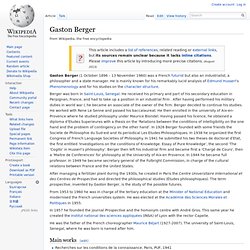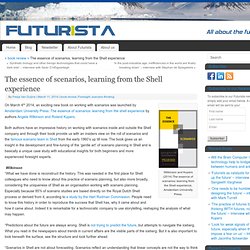

Living in the Futures. In 1965 Royal Dutch Shell put into service what it called the Unified Planning Machinery (UPM), a computer-driven system meant to bring more discipline to the company’s cash flow planning.

This kind of rational, model-based financial forecasting was very much in vogue in the 1960s. But before long, Shell’s top executives realized that many of the commitments they had to make extended well beyond UPM’s six-year time horizon—and that even within that horizon, UPM tended to get a lot wrong. In the early 1970s they shut it down. Things have gone much better for another Shell initiative that was begun in 1965, albeit with far less fanfare. Jimmy Davidson, the head of economics and planning for Shell’s exploration and production division, tapped the company veteran Ted Newland to start an activity called Long-Term Studies at the London headquarters. The practice is also enjoying a renaissance outside Shell, with growing evidence of its effectiveness.
Make It Plausible, Not Probable. Gaston Berger. Berger was born in Saint-Louis, Senegal.

He received his primary and part of his secondary education in Perpignan, France, and had to take up a position in an industrial firm . After having performed his military duties in world war I, he became an associate of the owner of the firm. Berger decided to continue his studies. He worked with Rene Le Senne and passed his baccalaureat. He then enrolled in the university of Aix-en-Provence where he studied philosophy under Maurice Blondel. Living in the Futures. In 1965 Royal Dutch Shell put into service what it called the Unified Planning Machinery (UPM), a computer-driven system meant to bring more discipline to the company’s cash flow planning.

This kind of rational, model-based financial forecasting was very much in vogue in the 1960s. But before long, Shell’s top executives realized that many of the commitments they had to make extended well beyond UPM’s six-year time horizon—and that even within that horizon, UPM tended to get a lot wrong. In the early 1970s they shut it down. Things have gone much better for another Shell initiative that was begun in 1965, albeit with far less fanfare.
Jimmy Davidson, the head of economics and planning for Shell’s exploration and production division, tapped the company veteran Ted Newland to start an activity called Long-Term Studies at the London headquarters. The practice is also enjoying a renaissance outside Shell, with growing evidence of its effectiveness. Make It Plausible, Not Probable. Richard Slaughter. The essence of scenarios, learning from the Shell experience. Wilkinson and Kupers (2014) The essence of scenarios: learning from the Shell experience, Amsterdam University Press.

On March 4th 2014, an exciting new book on working with scenarios was launched by Amsterdam University Press: The essence of scenarios: learning from the shell experience by authors Angela Wilkinson and Roland Kupers. Both authors have an impressive history on working with scenarios inside and outside the Shell company and through their book provide us with an insiders view on the roll of scenarios and the famous scenario team in Shell from the early 1960’s up till now. The book gives us an insight in the development and fine-tuning of the ‘gentle art’ of scenario planning in Shell and is basically a unique case study with educational insights for both beginners and more experienced foresight experts. Wilkinson “What we have done is reconstruct the history. “Predictions about the future are always wrong. “Scenarios in Shell are not about forecasting. Brief History Of Foresight Futures Alvarenga Carvalho.
The Origins of Futurism.